Accurate expense tracking isn’t optional for nonprofits — it’s required to stay compliant, protect donor trust, and ensure every dollar supports your mission. The challenge comes when restricted funds, multiple programs, and grant requirements make accounting more complex than standard business bookkeeping.
Many organizations start with QuickBooks Online (QBO), but as they grow, the need for more advanced, purpose-built solutions like Sage Intacct becomes clear. Here’s how each platform stacks up — and how to know when it’s time to transition.
Fund Classifications Every Nonprofit Must Track
Financial Accounting Standards Board guidelines require nonprofits to classify their net assets into two main categories: net assets with donor restrictions and net assets without donor restrictions. Within restricted funds, organizations must distinguish between temporarily restricted contributions (funds designated for specific purposes or time periods) and permanently restricted contributions (typically endowments where only earnings can be spent).
Key categories:
- Unrestricted funds — flexible for general use
- Temporarily restricted funds — designated for specific purposes/time periods
- Permanently restricted funds — typically endowments where only earnings are spent
The National Council of Nonprofits emphasizes that boards have a fiduciary duty to ensure charitable assets support the mission and align with donor intent. This obligation makes proper fund tracking a legal requirement, not just an accounting preference.
Unrestricted funds give organizations the flexibility to allocate resources where needed most. Temporarily restricted funds might support a specific program for three years or cover designated capital improvements. Permanently restricted funds represent endowments where the principal remains intact while investment earnings support operations.
QuickBooks Online: A Starting Point for Fund Tracking
QBO serves many small nonprofits adequately during their early stages. The platform offers class tracking, which allows organizations to categorize transactions by program or fund type. Finance teams can create classes such as “Education Program,” “Food Distribution,” or “Temporarily Restricted – Building Fund.”
Pros:
- Easy to set up and affordable for small nonprofits
- Offers class tracking for basic categorization
Cons:
- Manual processes increase error risk
- Limited fund balance reporting
- Difficult multi-dimensional tracking (e.g., by grant + location)
To track funds in QBO, enable class tracking in the account settings. Create a class for each program and restriction type. When entering expenses, assign them to the appropriate class. Run profit and loss reports by class to see how money flows through each fund.
The limitations become apparent as organizations grow. QBO requires manual processes for many fund accounting tasks. Staff members must remember to assign classes to every transaction, creating opportunities for errors. The system lacks native fund balance reporting, forcing accountants to build custom reports or export data to spreadsheets.
Multi-dimensional tracking proves challenging in QBO. Organizations that need to track expenses by both program and location, or by grant and department, often find themselves creating complex class structures that become difficult to manage. The platform was designed for small businesses, not the specific needs of nonprofits managing multiple restricted funds.
Sage Intacct: Purpose-Built for Complex Nonprofit Accounting
Sage Intacct was designed with nonprofit fund accounting at its core. The platform provides native support for tracking funds, programs, grants, and locations through dimensional accounting. Each transaction can carry multiple dimensions without creating complicated workarounds.
Advantages:
- Multi-dimensional tracking (funds, programs, grants, locations)
- Automated enforcement of fund restrictions
- Built-in fund balance and functional expense reporting
- Allocation engine to distribute shared costs fairly
Organizations can set up separate funds for unrestricted operations, temporarily restricted grants, and permanently restricted endowments. Within each fund, they can track programs like youth services, community outreach, or administrative support. Additional dimensions capture location data, grant information, or any other classification the organization needs.
The system enforces fund restrictions automatically. When staff members attempt to spend from a restricted fund for an unauthorized purpose, Sage Intacct can block the transaction or flag it for review. This built-in control reduces compliance risks and prevents accidental misuse of restricted funds.
Fund balance reports generate automatically, showing beginning balances, revenues, expenses, and ending balances for each fund. According to the Journal of Accountancy, organizations must provide analysis of expenses by both natural classification and functional categories. Sage Intacct produces these reports without requiring manual manipulation of data.
The allocation engine distributes shared costs across programs based on rules the organization defines. Administrative expenses, facility costs, and executive salaries can be split proportionally among programs, ensuring accurate functional expense reporting. The system maintains an audit trail showing how each allocation was calculated.
How to Build Effective Expense Tracking Systems
Start by defining your fund structure clearly. List all revenue sources and determine which restrictions apply to each. Create a chart of accounts that separates program expenses from supporting services. Identify which expenses belong to fundraising, program services, and management activities.
Best practices:
- Define your fund structure clearly before setup
- Document allocation methodology for shared costs
- Train staff on proper coding and fund accounting principles
- Reconcile fund balances monthly against donor agreements
Document your allocation methodology before implementation. Determine how you will distribute shared costs like rent, utilities, and staff salaries across programs. Create written policies that explain your approach to anyone reviewing your financial statements. Update these policies annually as programs evolve.
Train your entire team on fund accounting principles. Program managers need to understand why they cannot freely move money between restricted and unrestricted funds. Administrative staff must learn how to code transactions correctly when entering bills or processing reimbursements. Regular training sessions prevent errors that compromise financial reporting accuracy.
Reconcile fund balances monthly. Compare your general ledger to grant agreements and donor correspondence. Verify that temporarily restricted funds are being released as you meet the specified conditions. Review permanently restricted endowment balances to confirm the principal remains intact while spending only approved amounts from investment earnings.
When to Transition from QBO to Sage Intacct
Organizations typically consider moving from QBO to Sage Intacct when they manage multiple grants simultaneously, receive substantial restricted contributions, or face increasing audit complexity. An annual operating budget exceeding $1 million often signals the need for more capable software.
Transition triggers:
- Managing multiple grants simultaneously
- Receiving substantial restricted contributions
- Facing increased audit complexity
- Annual operating budget exceeding $1 million
The transition requires planning and resources. Export historical data from QBO and map it to the new fund structure in Sage Intacct. Test the system thoroughly before going live. Allow at least two months for implementation and staff training to ensure a smooth transition.
Cost considerations extend beyond software licensing. Factor in implementation services, ongoing support, and training time. Compare these expenses against the cost of manual workarounds, spreadsheet maintenance, and potential compliance issues with your current system.
Many organizations find that proper fund tracking and restriction management become simpler with purpose-built nonprofit software. The investment in better systems pays dividends through improved financial transparency, reduced audit findings, and stronger donor confidence.
Organizations committed to GAAP compliance need systems that support proper fund accounting from the start. Whether your organization operates in QBO or implements Sage Intacct, the goal remains the same: ensuring every dollar serves its intended purpose while maintaining complete accountability to donors and regulators.
Contact us today to discover how we can support your expense tracking and fund accounting needs. Our JFW Accounting Services team offers guidance on compliance requirements, accounting procedures, and technology solutions including Sage Intacct to help your nonprofit maintain accurate financial records while focusing on your mission.

Jo-Anne Williams Barnes, is a Certified Public Accountant (CPA) and Chartered Global Management Accountant (CGMA) holding a Master’s of Science in Accounting (MSA) and a Master’s in Business Administration (MBA). Additionally, she holds a Bachelor of Science (BS) in Accounting from the University of Baltimore and is a seasoned accounting professional with several years of experience in the field of managing financial records for non-profits, small, medium, and large businesses. Jo-Anne is a certified Sage Intacct Accounting and Implementation Specialist, a certified QuickBooks ProAdvisor, an AICPA Not-for-Profit Certificate II holder, and Standard for Excellence Licensed Consultant. Additionally, Jo-Anne is a member of American Institute of Certified Public Accountant (AICPA), Maryland Association of Certified Public Accountants (MACPA), and Greater Washington Society of Certified Public Accountants (GWSCPA) where she continues to keep abreast on the latest industry trends and changes.
